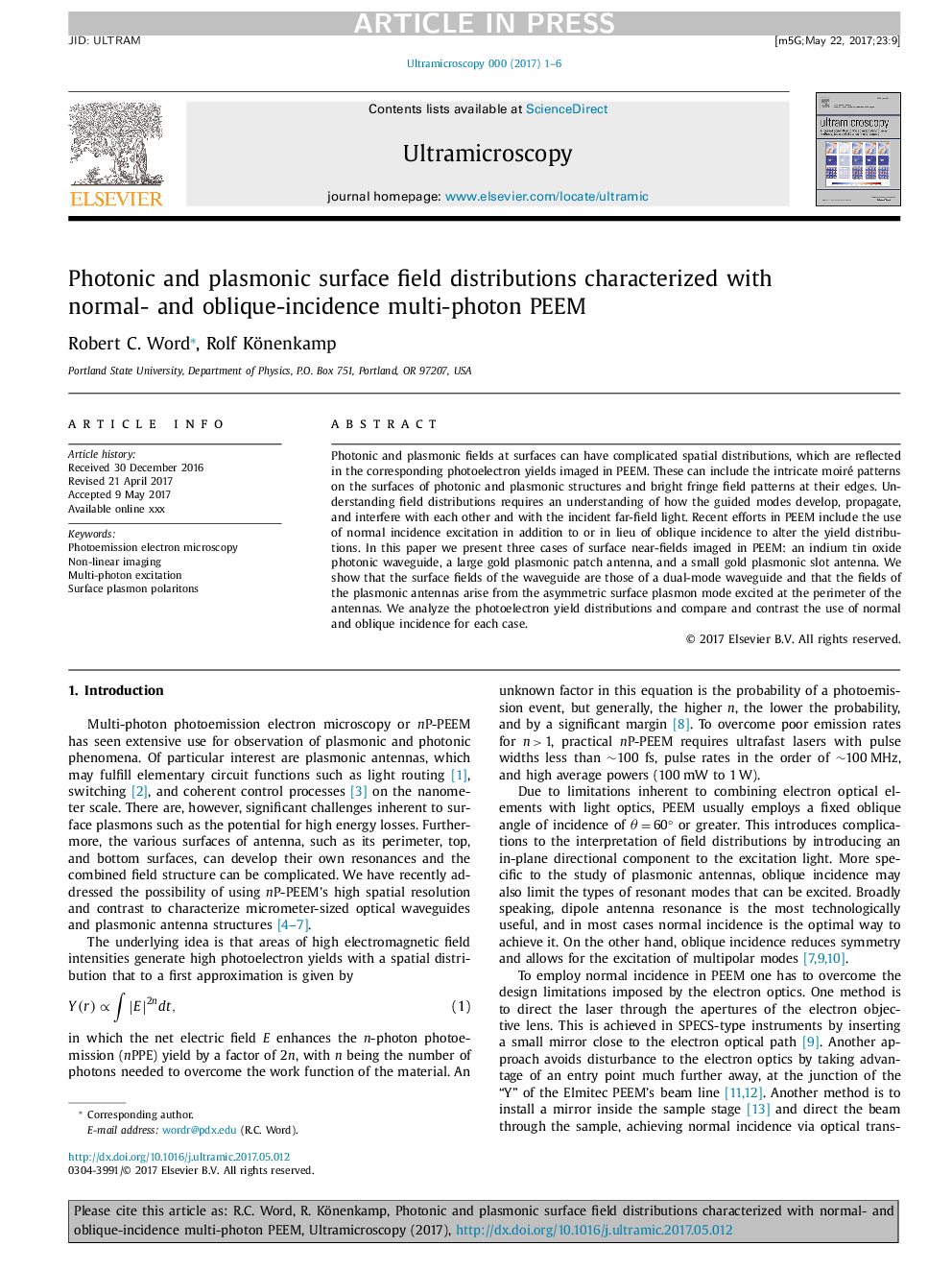| Article ID | Journal | Published Year | Pages | File Type |
|---|---|---|---|---|
| 8037809 | Ultramicroscopy | 2017 | 6 Pages |
Abstract
Photonic and plasmonic fields at surfaces can have complicated spatial distributions, which are reflected in the corresponding photoelectron yields imaged in PEEM. These can include the intricate moiré patterns on the surfaces of photonic and plasmonic structures and bright fringe field patterns at their edges. Understanding field distributions requires an understanding of how the guided modes develop, propagate, and interfere with each other and with the incident far-field light. Recent efforts in PEEM include the use of normal incidence excitation in addition to or in lieu of oblique incidence to alter the yield distributions. In this paper we present three cases of surface near-fields imaged in PEEM: an indium tin oxide photonic waveguide, a large gold plasmonic patch antenna, and a small gold plasmonic slot antenna. We show that the surface fields of the waveguide are those of a dual-mode waveguide and that the fields of the plasmonic antennas arise from the asymmetric surface plasmon mode excited at the perimeter of the antennas. We analyze the photoelectron yield distributions and compare and contrast the use of normal and oblique incidence for each case.
Keywords
Related Topics
Physical Sciences and Engineering
Materials Science
Nanotechnology
Authors
Robert C. Word, Rolf Könenkamp,
